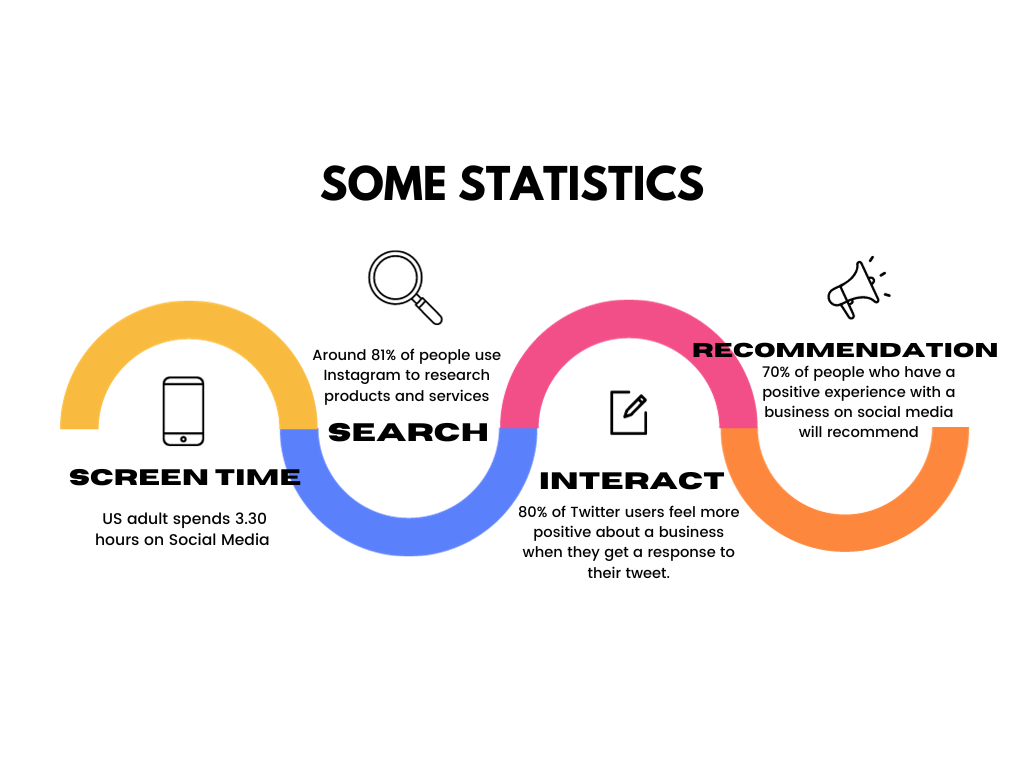Social media nowadays is much more than platforms for entertainment; it has become necessary for businesses of all sizes to reach customers. People use social media for tips, advice, inspiration or connecting with other people.
What is social media marketing?
Social media marketing is a form of digital marketing that helps the already known social media networks to achieve your marketing strategy and branding goals. But it’s not only about creating business accounts and posting content. Social media marketing requires a powerful strategy with measurable goals like:
- Maintaining and optimizing your profiles.
- Posting content like pictures, videos, stories, and live videos that represent your brand and attract a relevant audience.
- Responding to comments and likes and tracking your reputation.
- Following and engaging with followers, customers, and influencers to build a community around your brand.
Social media marketing also includes paid social media advertising, where you can pay to have a large number of impressions to appear to your targeted audience.
Benefits of social media marketing
Right now, social media is one of the most effective and cheap channels for marketing your business and to reach your future customers. Here are some of the specific benefits:
- Make your business accessible: Social media gives you the ability to turn your business into a known and active participant in your market. Your profile, posts, and interactions with users form a close, warm and approachable persona will give that feeling of relatable or familiar to your audience that will connect with you.
- Traffic to your website: Between the link in your profile, content in other platforms, and your ads, social media is a top channel for increasing traffic to your website and getting people to know your business.
- Generate engagement and customers: You can also generate leads and conversions directly on these platforms, through features like Instagram/Facebook shops, direct messaging and call to action buttons on profiles.
- Brand Identity: The post, reels and content your post on social media platforms allows you to build your visual identity across big audiences and improve brand awareness. And better and more specific brand awareness means better results with all your other campaigns.
- Build relationships: These platforms give you the opportunity to have direct and easy communication with your followers through which you can network, listen to feedback, create conversations, and connect directly with individuals.
Also read: keys to a succesful marketing strategy
Social media marketing statistics
These are some statistics that will prove how important social media marketing is for your brand or business:
- The average US adult spends 3.30 hours on social media and it is increasing every day.
- Over 70% of people who have a positive experience with a business on social media will recommend that business to their networks.
- Around 81% of people use Instagram to research products and services.
- Nearly 80% of Twitter users feel more positive about a business when they get a response to their tweet.
Okay now you might be thinking all of this data and tips are great but how can I start creating a good strategy? Well my friend you are in the right place.
 Creating your social media marketing plan
Creating your social media marketing plan
Now that you know the basics and essentials of a social media marketing strategy, it’s time to put it into action. This is the fun part:
Your social media marketing plan is going to be your map to follow. It puts structure and harmony around your strategy so you can measure your success and make sure you’re spending your resources wisely. Here’s how to create your social media marketing plan:
- Choose your platforms: This is really important. You need to choose the platform you want to be seeing not based on if it is more popular or cool than other but if you target audience use it frequently. Another thing you can do is in which platforms are present your competitors, this will help you to define your own place in the industry map. But remember, only take on the number of platforms you can actively keep up with, sometimes less is more. You can always start with one and then add on more slowly.
- Set realistic goals and objectives: These should be simple but must be the first thing to start , like post once a day for a month, get your profiles set up, or do a competitive analysis. Once you set everything, you’ll be able to set more specific and build a better strategy each specific for each goal that could be: grow your engagement, get more followers, grow your community…
- Report and adjust regularly: Use each platform’s analytics to identify which posts generate the most engagement, whether you’re getting more followers, and to see your audience demographics.
Also read: trends social network












